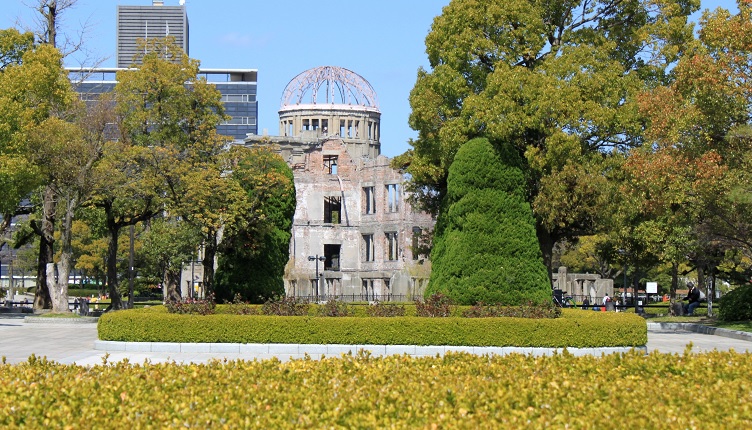Hiroshima is now known for much more than being the first city to fall victim to an atomic bomb during World War II. Today it is a vibrant modern metropolis with beautiful parks and museums, delicious specialty food, and a much beloved baseball team, the Hiroshima Toyo Carp. From castles, cars, museums and even baseball with a Japanese twist, here are the 7 best things to do in Hiroshima.
7 Best Things to Do in Hiroshima
1. Storm Hiroshima Castle
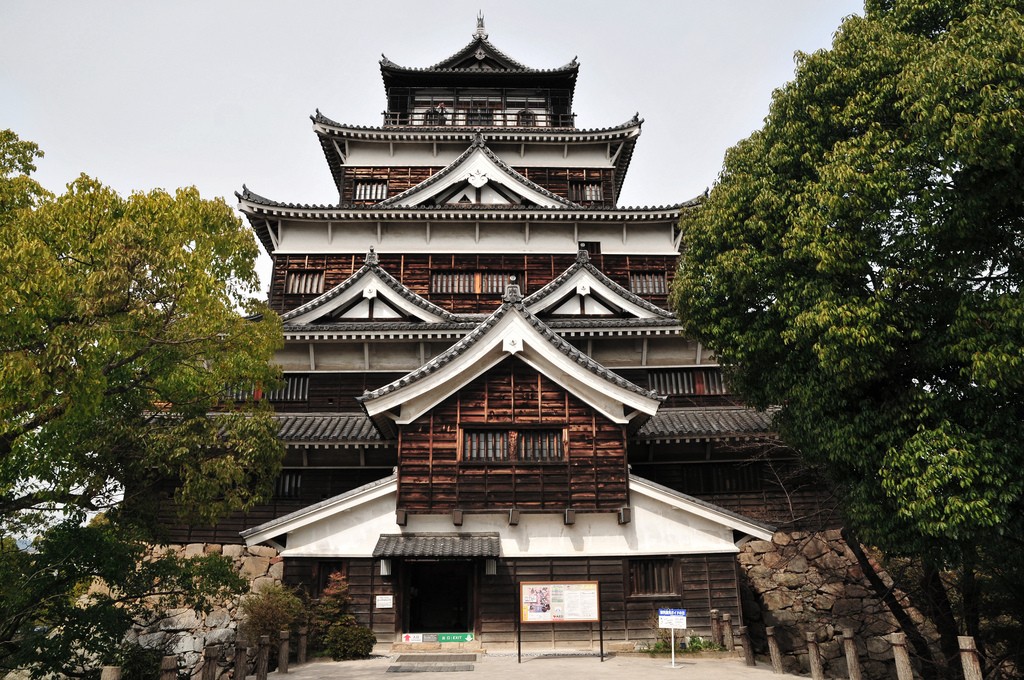
The original Rijo (Carp) Castle was built in 1589 and later served as a military headquarters. The castle was reconstructed after being destroyed by the atomic bomb, but parts of the original castle foundations can still be seen. It is a good example of a plains castle, which is actually less common than a hilltop one. The reconstructed keep of this historic Hiroshima attraction now holds five floors with artifacts and explanations of Japan’s castle period. There are some interactive exhibits including armor that can be tried on for photos, and the castle tower also offers an exceptional view of the surrounding park, including the moat.
2. Drive into the Mazda Museum
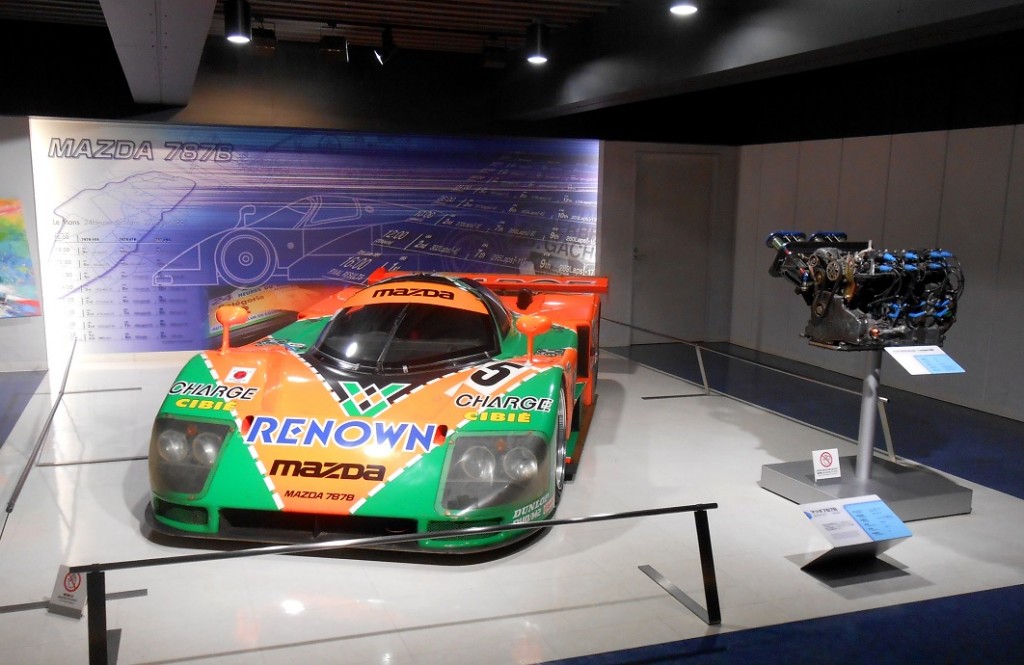
Hiroshima remains an industrial powerhouse with particular strength in automobiles. Mazda, which was founded in Hiroshima in 1920, is headquartered outside the city center. The Mazda Museum offers tours on the history of the car company and a part of the factory. Pure heaven for car enthusiasts, the tour can also be enjoyed by people with little knowledge or particular interest in cars. Not only can you see robots putting parts into cars on the actual assembly line, but you can also get a look at some of Mazda’s unique concept vehicles, like the Mazda Kiyora, which recycles rainwater for drinking. Tours should be reserved in advance and last approximately 90 minutes. Take one of the English tours offered daily at 10 a.m.-and experience an unexpected side of Hiroshima sightseeing.
3. Visit Hiroshima Peace Memorial Park
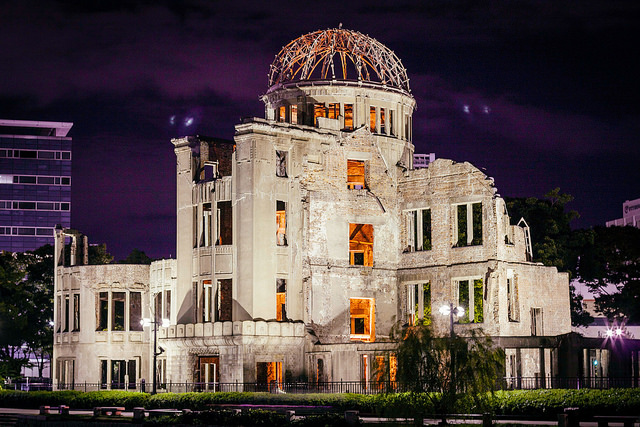
A visit to Hiroshima is not complete without at least stopping by the sites in the Peace Memorial Park, notably the A-Bomb Dome, Hiroshima National Peace Memorial Hall for the Atomic Bomb Victims, and the Peace Memorial Museum. Once the commercial center of Hiroshima, the park area is now dedicated to peace memorial facilities and its attractive lawns and trees provide a contrast to the surrounding development of downtown Hiroshima. The park lives up to its name with a tranquil atmosphere, and the 300 cherry trees create a beautifully striking contrast with the harsh outline of the A-Bomb Dome in cherry blossom season. Of all the things to do in Hiroshima, the various peace museums are the most likely to stay with visitors long after they leave.
4. Take in an Art Museum
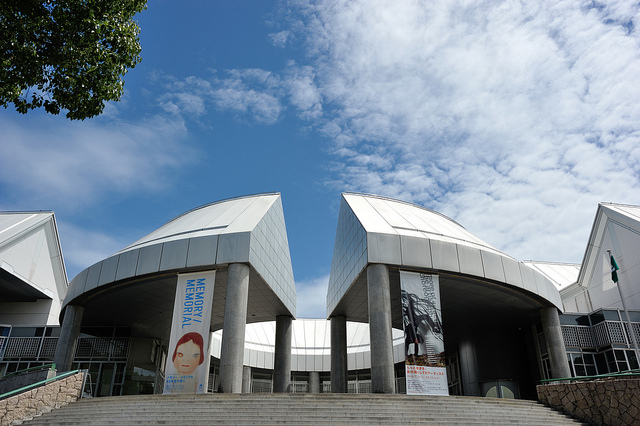
Hiroshima also has several art museums, notably the Hiroshima Prefectural Museum of Art and the Hiroshima City Museum of Contemporary Art (MOCA). The Prefectural Museum of Art has a permanent collection of both modern European art, including works by Dali and Magritte, and modern Japanese art. The museum has also hosted exhibits on traditional Japanese crafts. The Hiroshima City Museum of Contemporary Art near Hiyajima Park also offers both Western and Japanese artwork, but the focus is on contemporary Japanese art in unique styles. The museum has a modern design exhibit space, including a free sculpture garden. Although a departure from other more “traditional” Hiroshima sightseeing venues, both museums are worth a visit for the art-inclined.
5. Stroll through Shukkeien Garden
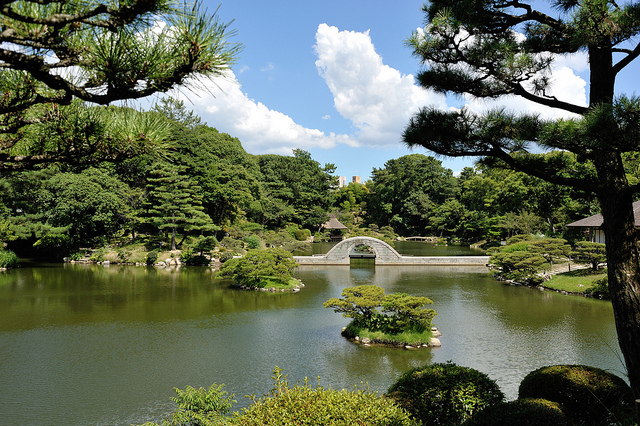
Hiroshima is also home to one of Japan’s best gardens, Shukkeien. Originally created in 1620 by tea ceremony master Ueda Soko for the feudal lord Asano Nagakira, the flora and grounds of this Japanese-style garden are designed to recreate scenic landscapes and natural formations in miniature; it is said that the garden was modeled after a lake called Xi Hu in Hangzhou, China. All this, plus the beautiful sight of the plum and cherry blossoms in spring, creates a peaceful oasis in the middle of Hiroshima’s high-rise buildings.
6. Do the Wave at a Hiroshima Carp Game
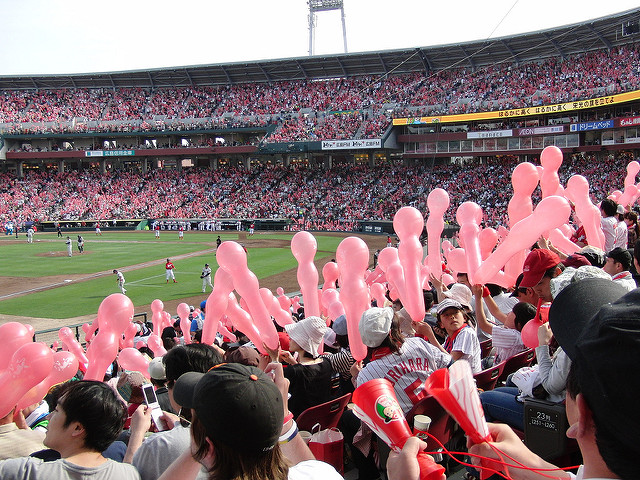
In addition, if you are in Hiroshima during the baseball season, don’t miss the chance to see the Hiroshima Carp (and their enthusiastic fans!) in action. The team was formed in 1950 as a symbol of Hiroshima’s post-war revival. Tickets can be purchased at the box office or at major hotels. While the team has not made it to the championship in recent years, they are well-known for their fighting spirit. The fans also truly get into the game so come for the baseball, but stay for a kind of fandom that is wholly unique to Japanese ballparks.
7. Dine on Hiroshima-Style Okonomiyaki
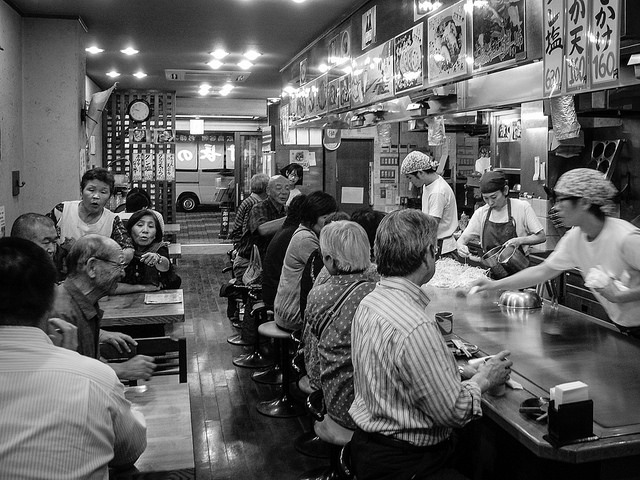
Besides the many museums and parks, one major Hiroshima attraction is better tasted than seen: It’s the special regional food culture itself! In particular, Hiroshima is famous for its style of okonomiyaki, a sort of savory fried pancake made with cabbage, noodles, egg, and meat or seafood with a deliciously sweet-savory sauce. There are nearly 100 okonomiyaki restaurants in Hiroshima alone, with many more in nearby towns. Hiroshima-style okonomiyaki competes with that of Osaka-style, and they differ in both cooking methods and ingredients. Osaka-style okonomiyaki does not include soba noodles, and the ingredients are pre-mixed, whereas Hiroshima-style okonomiyaki is made by layering the various ingredients while cooking. One taste of Hiroshima-style okonomiyaki is sure to make you a fan!
Fun Places near Hiroshima

Miyajima, an island off the coast of Hiroshima, is a popular day trip for many travelers, foreign and Japanese alike. The island is famous for its large red torii gate, a part of Itsukushima Shrine, which is built right on the coastline. Renowned as one of Japan’s three most scenic views, the gate appears to float in the water at high tide. In addition to Itsukushima Shrine, Daisho-in Temple is also worth a visit. The temple, which is located at the base of Mt. Misen, is one of the most important temples of Shingon Buddhism. Especially interesting is a cave filled with 88 icons, each representing a stop along the Shikoku Pilgrimage. Miyajima is also famous for its momiji manju, maple-leaf shaped sweets filled with red bean or other fillings. Wild deer roam the island freely, providing many great photo opportunities.
Getting from Osaka to Hiroshima
Hiroshima is easily accessible by bullet train on the JR Sanyo Shinkansen. The trip takes only 90 minutes from Shin-Osaka, and it is possible to use a Japan Rail Pass if traveling on a Hikari train. On a Nozomi train, the faster of the two Shinkansen types, a Japan Rail Pass cannot be used.
Getting Hiroshima WiFi
While it’s possible to occasionally find free Hiroshima WiFi, for most tourists it’s best to rent portable WiFi during your trip to Japan. This affordable option gives you the ability to access maps, translation apps, restaurant finders, e-mail, and your favorite social media without having to ever look for a WiFi signal. Currently, Docomo (Japan’s largest data carrier) offers the widest coverage in Hiroshima (see the comparison below), as well as most other major cities in Japan. If you’re interested in using WiFi during your trip, we suggest renting either a Sakura Mobile Data SIM Card or Portable WiFi Router, both backed by Docomo. If you’re unsure which device is best for you, be sure to check out our product comparison guide.
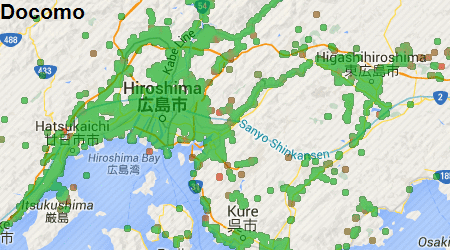
While its tragic history will always be a part of Hiroshima, today the city is a lively metropolitan area with a lot to offer visitors, from history to art, gardens to car factories and even baseball. And don’t forget the food! With all its variety, there is certainly no shortage of things to do in Hiroshima and memories to share.

